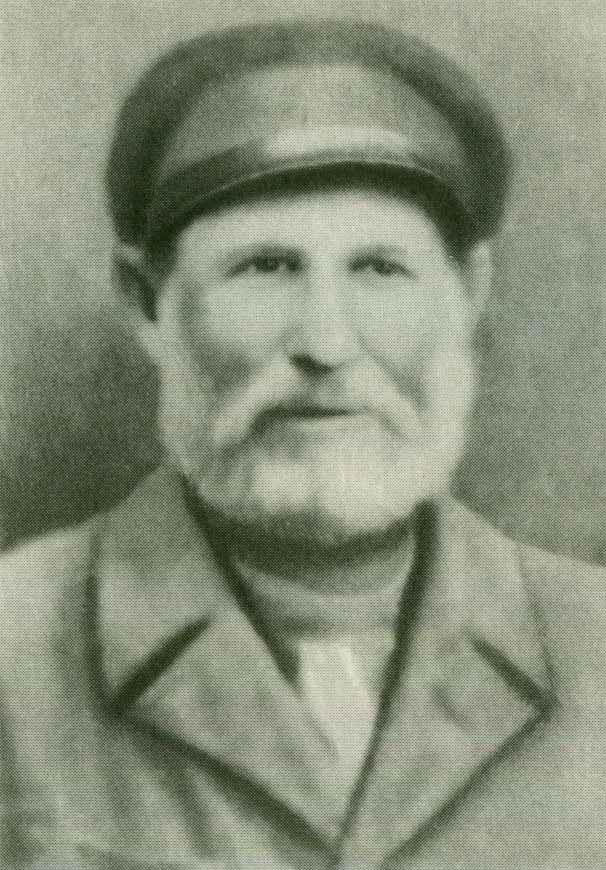1. Overview
Matvey Kuzmich Kuzmin, born in 1858, was a Russian peasant who became a celebrated World War II hero. At 83 years old, he bravely sacrificed his life on February 14, 1942, to lead Nazi German forces into a deadly ambush by Soviet troops near the village of Malkino. His act of defiance against the occupying forces earned him the posthumous title of Hero of the Soviet Union, making him the oldest recipient of this prestigious award. His story became a significant part of the Soviet and later Russian national narrative, emphasizing patriotism and selfless sacrifice.
2. Life and Background
Matvey Kuzmin's personal background shaped his independent spirit and eventual heroic actions during the war.
2.1. Early Life
Matvey Kuzmich Kuzmin was born on August 3, 1858, in the village of Kurakino, located in the Velikoluksky District of the then Pskov Governorate within the Russian Empire. He lived as a self-employed farmer, notably resisting the widespread collectivization efforts and declining to join a kolkhoz, or collective farm. Despite this, he continued to live with his grandson and sustained himself by hunting and fishing on the territory of the local kolkhoz known as "Rassvet" (РассветDawnRussian). Due to his solitary and independent nature, he was often referred to by the nickname "Biriuk," which translates to "lone wolf."
3. Heroic Act during World War II
Kuzmin's decisive actions in February 1942, during the German occupation of his village, led to his enduring recognition as a national hero.
3.1. Background of German Occupation
In February 1942, Matvey Kuzmin's home region became occupied by the forces of Nazi Germany during World War II. A German battalion was stationed and housed in the village of Kurakino. The objective of this German unit was to breach the Soviet defenses near Velikiye Luki by advancing into the rear of the Soviet troops, who were deeply entrenched at Malkino Heights.
3.2. Guiding the Ambush Operation
On February 13, 1942, the German commander sought the assistance of the then 83-year-old Kuzmin, asking him to guide his men through the local terrain. In exchange for his services, the commander offered Kuzmin money, flour, kerosene, and a Sauer & Sohn hunting rifle. Kuzmin feigned agreement, accepting the offer. However, upon learning the proposed route, he secretly dispatched his grandson, Vasilij, to the village of Pershino, located 3.7 mile (6 km) from Kurakino. Vasilij's mission was to warn the Soviet troops in the area and propose a strategic ambush near the village of Malkino. Throughout the night, Kuzmin deliberately led the German units along arduous and circuitous paths, finally guiding them to the outskirts of Malkino as dawn broke.
3.3. Sacrifice and Death
Upon reaching Malkino, the German battalion was suddenly subjected to a fierce attack. The village defenders, reinforced by the 2nd battalion of the 31st Cadet Rifle Brigade from the Kalinin Front, launched a coordinated assault. The German forces found themselves under intense heavy machine gun fire, leading to significant casualties, with approximately 50 soldiers killed and 20 captured. Amidst the chaos of the ambush, a German officer realized Kuzmin's deception. In a fit of rage, the officer turned his pistol towards Kuzmin and shot him twice. Matvey Kuzmin died during the skirmish, having successfully ensured the ambush of the German unit.
3.4. Burial
Three days after his death, Matvey Kuzmin was honored with a military burial. Later, his remains were reinterred at the military cemetery in Velikiye Luki, a city in the Pskov Oblast.
4. Legacy and Posthumous Honors
Matvey Kuzmin's sacrifice had a profound impact, leading to his posthumous recognition and widespread commemoration.
4.1. Hero of the Soviet Union Title
Matvey Kuzmin's act of self-sacrifice, drawing comparisons to the legendary Russian folk hero Ivan Susanin who similarly led invading forces astray, earned him the highest honor in the Soviet Union. On May 8, 1965, he was posthumously awarded the title of Hero of the Soviet Union. This distinction made him the oldest person to receive the Hero of the Soviet Union title, based on his age at the time of his death.
4.2. Public and Literary Impact
Kuzmin's heroic death gained widespread recognition largely due to an article published in Pravda, the official newspaper of the Communist Party. The article was written by Boris Polevoy, a military correspondent who had been in the area and attended Kuzmin's funeral. In 1948, Polevoy further immortalized Kuzmin's story by writing the children's book The Last Day of Matvey Kuzmin. This story continues to be included in Russian school readings, particularly for third-grade students, contributing to his enduring legacy within the national narrative.
4.3. Memorials and Commemoration
Throughout the Soviet Union, numerous streets were named in honor of Matvey Kuzmin, ensuring his memory persisted across various localities. A Soviet naval trawler was also named after him, signifying his importance to the nation. A prominent statue commemorating Kuzmin was erected in 1943 at the Izmailovsky Park Moscow Metro station, which is now known as Partizanskaya. The statue was designed by the renowned Soviet sculptor Matvey Manizer.
